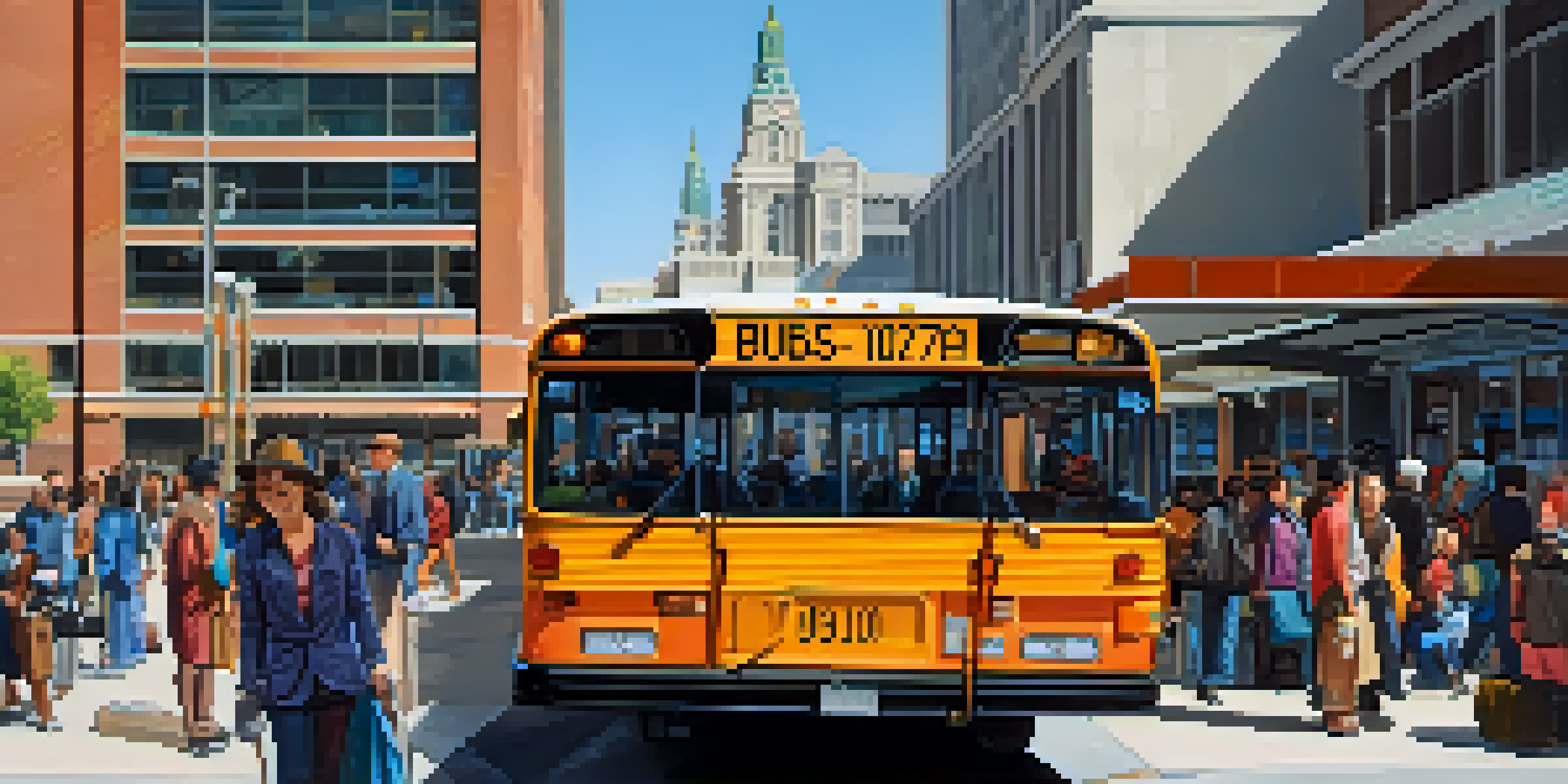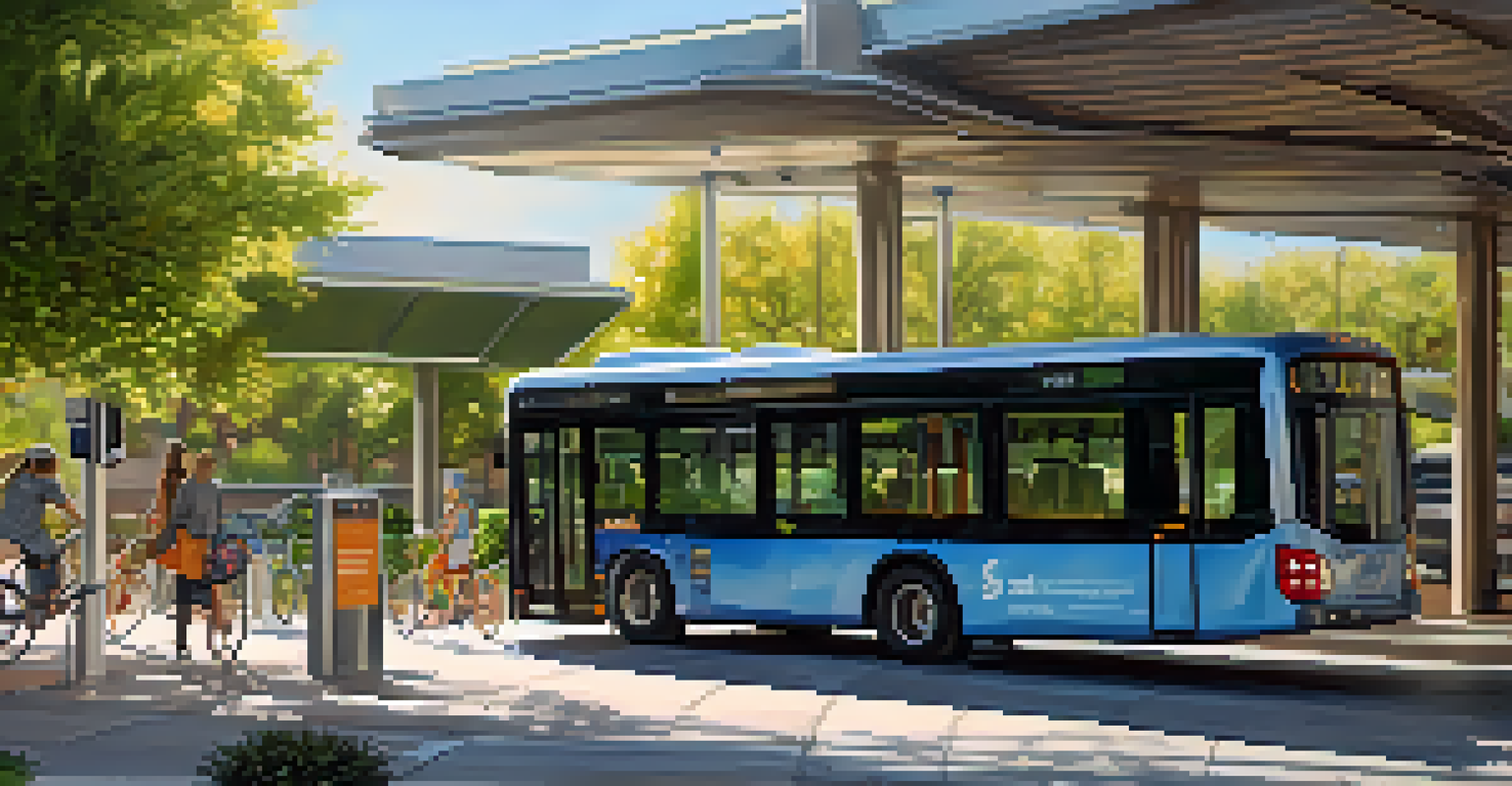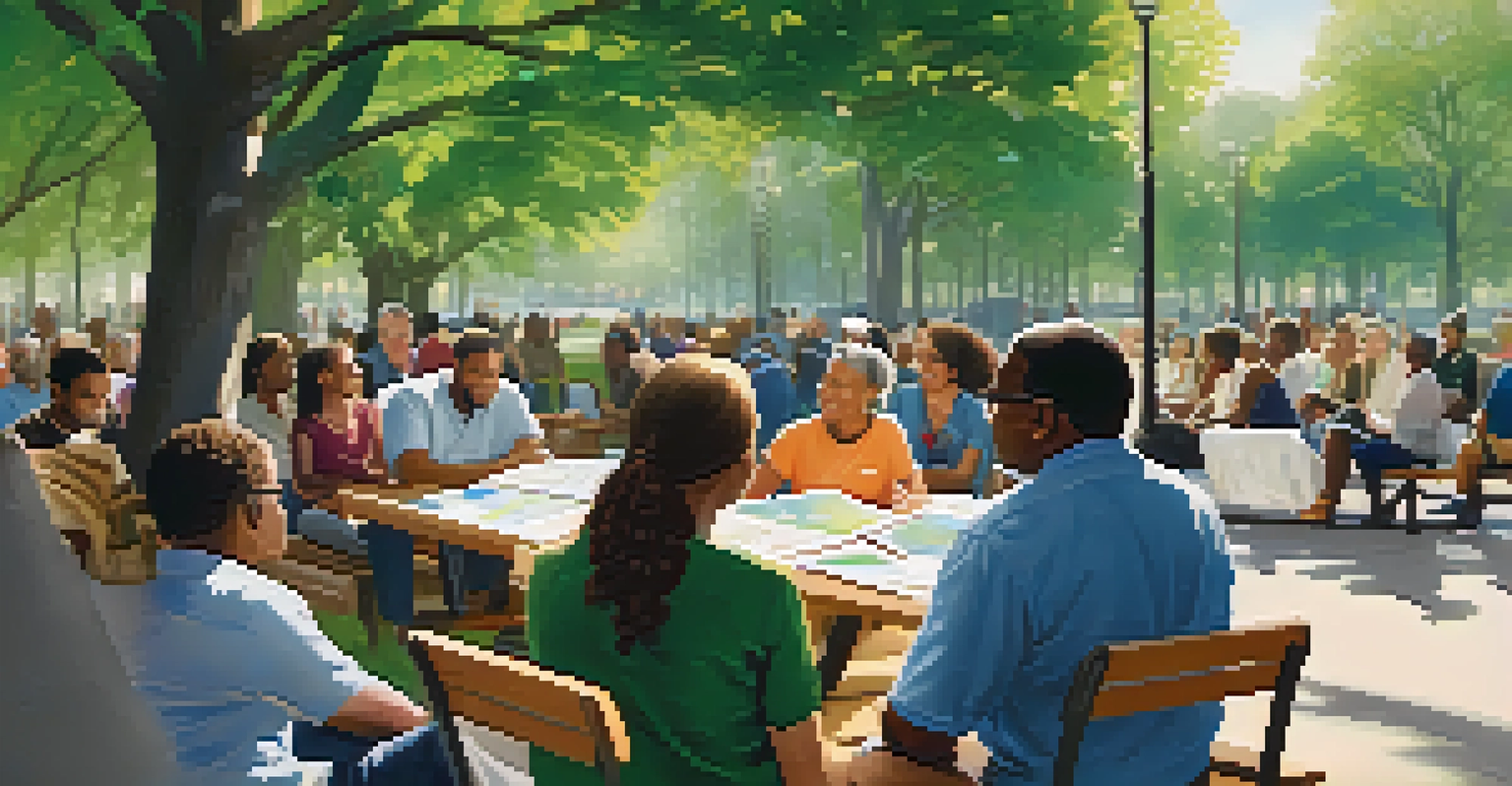The Future of Public Transportation in Salt Lake City

Current State of Public Transportation in Salt Lake City
Salt Lake City boasts a diverse public transportation network that includes buses, light rail, and commuter trains. The Utah Transit Authority (UTA) operates this system, which aims to connect residents to essential destinations across the city and beyond. Despite its strengths, there are challenges such as limited coverage in suburban areas and reliance on traditional timetables, which can be inconvenient for many riders.
Public transport is the lifeblood of a city, connecting people to opportunities and fostering community engagement.
Public transport usage in Salt Lake City has seen fluctuations, especially during the pandemic, prompting a re-evaluation of how services are offered. Many residents are calling for a more reliable and frequent service to meet the needs of a growing population. This shift in demand highlights the importance of adapting public transportation to better serve a changing demographic landscape.
As the city evolves, so do the expectations of its residents regarding public transport. Many are now looking for smarter, more efficient solutions that integrate modern technology with traditional transit methods. Understanding these current dynamics is crucial for envisioning the future of public transport in Salt Lake City.
Emerging Technologies Shaping Public Transport
Technology is rapidly transforming the public transportation landscape, and Salt Lake City is no exception. Innovations such as real-time tracking apps and mobile payment options are making it easier for commuters to navigate the system. These tools not only enhance user experience but also encourage more people to opt for public transit over personal vehicles.

Electric and autonomous vehicles are on the horizon, offering the potential to reduce emissions and improve efficiency. As these technologies become more accessible, Salt Lake City could see a shift toward greener transportation options. The integration of these advancements could also lead to cost savings and better service reliability for residents.
Need for Improved Public Transit
Salt Lake City residents are calling for more reliable and frequent public transportation services to accommodate a growing population.
Additionally, data analytics plays a crucial role in optimizing routes and schedules based on actual usage patterns. By harnessing this information, transit authorities can make informed decisions that directly enhance the rider experience. This tech-driven approach could pave the way for a more responsive and user-friendly public transportation system.
Sustainability Initiatives in Public Transit
Sustainability is a growing concern, and many cities are looking to their public transportation systems as a key component of eco-friendly initiatives. Salt Lake City is actively exploring ways to reduce its carbon footprint through various green initiatives in public transit. This includes transitioning to electric buses and encouraging alternative modes of transportation, like biking and walking.
Sustainable public transportation is not just an option; it's a necessity for the health of our planet and our communities.
The city's commitment to sustainability resonates with many residents who are increasingly prioritizing environmental responsibility. By investing in cleaner transit options, Salt Lake City not only addresses climate change but also improves air quality and public health. This shift represents a significant step toward a more sustainable urban environment.
Community engagement is vital to the success of these initiatives. By involving residents in discussions about sustainability, the city can better align its transit goals with public expectations. This collaborative approach fosters a sense of ownership among citizens, making them more likely to support and utilize the evolving public transport options.
Integration of Different Modes of Transport
A seamless transport experience is essential for encouraging public transit usage, and Salt Lake City is working towards better integration of its various transport modes. This means ensuring that buses, trains, and bike-share systems work together harmoniously. When commuters can easily transfer from one mode to another, it reduces travel time and enhances overall convenience.
Efforts to create transit hubs that facilitate these connections are already underway. By providing amenities such as shelter, information kiosks, and parking for bicycles, these hubs can serve as a one-stop shop for all transportation needs. Such developments not only streamline the commuting process but also make public transport more appealing to a wider audience.
Embracing Sustainable Solutions
The city is actively pursuing sustainability initiatives, such as electric buses, to reduce its carbon footprint and improve air quality.
Moreover, integrating modes of transport can help reduce congestion on local roads, benefiting both public transit users and those who prefer driving. As Salt Lake City continues to grow, creating an interconnected transport system will be crucial in managing urban mobility effectively.
Community Engagement and Public Input
For public transportation to truly meet the needs of Salt Lake City's residents, community engagement is essential. The city is making strides to involve citizens in planning and decision-making processes. This can be achieved through public forums, surveys, and workshops that gather feedback and ideas from the community.
Community input not only helps transit authorities understand the specific needs and preferences of riders but also fosters a sense of ownership. When residents feel that their voices are heard, they are more likely to support new initiatives and use public transportation. This collaborative spirit is vital for developing a transit system that serves everyone effectively.
Additionally, outreach programs can help educate the public about available transit options and their benefits. By raising awareness and building enthusiasm around public transport, Salt Lake City can cultivate a culture of ridership that supports its long-term goals.
Challenges Facing Public Transportation Development
Despite the positive outlook for public transportation in Salt Lake City, several challenges remain. Funding is a significant hurdle, as substantial investments are required to improve and expand services. Balancing budget constraints with the need for enhanced transit options is a complex issue that requires careful planning and prioritization.
Furthermore, public perception plays a crucial role in the success of transit systems. Some residents may still view public transportation as a less desirable option compared to private vehicles. Overcoming these stigmas will require a concerted effort to promote the benefits of public transit, such as cost savings, environmental impact, and convenience.
Community Engagement is Key
Involving residents in planning and decision-making processes fosters a sense of ownership and enhances support for public transit initiatives.
Finally, logistical challenges related to infrastructure and urban planning can impede progress. Coordinating with various stakeholders, including city planners and developers, is essential for ensuring that public transportation aligns with the city's growth trajectory. Addressing these challenges head-on will be key to realizing a robust public transportation future.
Future Vision: Salt Lake City's Transit Landscape
Looking ahead, the vision for public transportation in Salt Lake City is one of seamless connectivity and sustainability. As the city continues to grow, so will the demand for efficient and reliable transit options. The goal is to create a system that not only meets current needs but also anticipates future challenges and opportunities.
This vision includes expanding transit coverage to underserved areas, enhancing service frequency, and integrating advanced technologies. By prioritizing these goals, Salt Lake City can develop a public transportation network that is both modern and accessible. The resulting system will not only benefit residents but also attract visitors and businesses to the region.

Ultimately, the future of public transportation in Salt Lake City is about creating a vibrant urban environment where residents can easily navigate their city. By embracing innovation, engaging the community, and addressing challenges head-on, Salt Lake City can lead the way in redefining public transportation for generations to come.